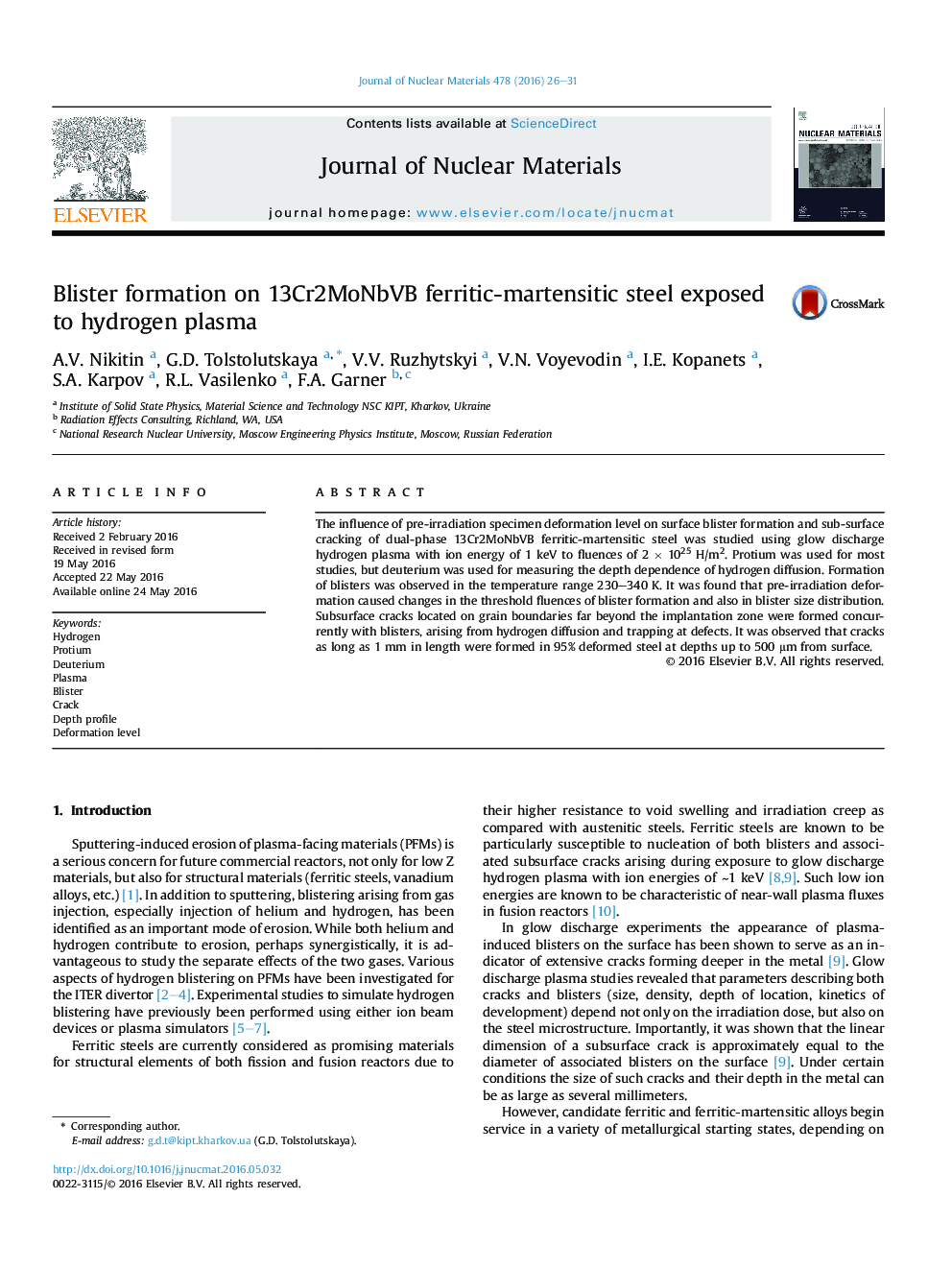| Article ID | Journal | Published Year | Pages | File Type |
|---|---|---|---|---|
| 1564681 | Journal of Nuclear Materials | 2016 | 6 Pages |
Abstract
The influence of pre-irradiation specimen deformation level on surface blister formation and sub-surface cracking of dual-phase 13Cr2MoNbVB ferritic-martensitic steel was studied using glow discharge hydrogen plasma with ion energy of 1 keV to fluences of 2 Ã 1025 H/m2. Protium was used for most studies, but deuterium was used for measuring the depth dependence of hydrogen diffusion. Formation of blisters was observed in the temperature range 230-340 K. It was found that pre-irradiation deformation caused changes in the threshold fluences of blister formation and also in blister size distribution. Subsurface cracks located on grain boundaries far beyond the implantation zone were formed concurrently with blisters, arising from hydrogen diffusion and trapping at defects. It was observed that cracks as long as 1 mm in length were formed in 95% deformed steel at depths up to 500 μm from surface.
Related Topics
Physical Sciences and Engineering
Energy
Nuclear Energy and Engineering
Authors
A.V. Nikitin, G.D. Tolstolutskaya, V.V. Ruzhytskyi, V.N. Voyevodin, I.E. Kopanets, S.A. Karpov, R.L. Vasilenko, F.A. Garner,
